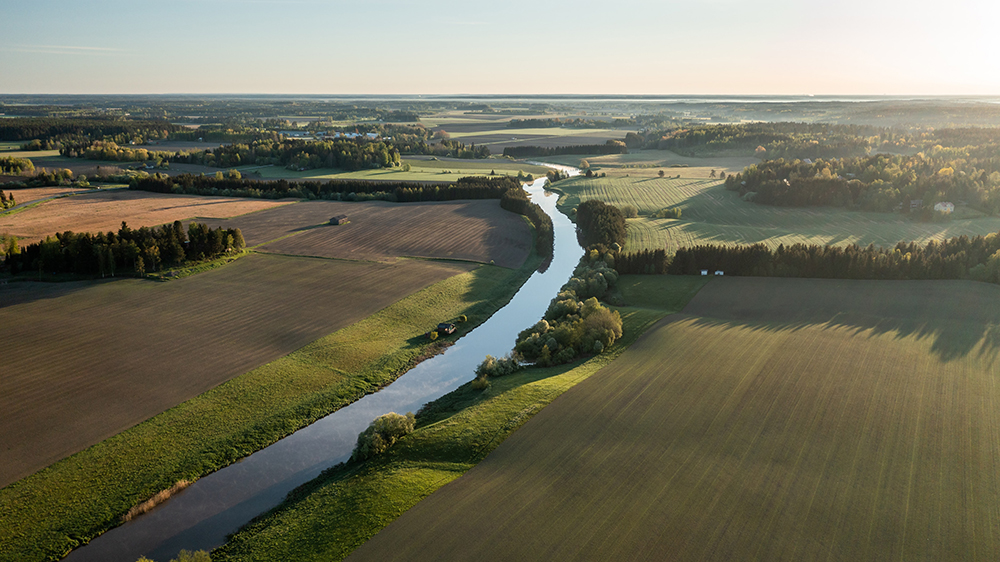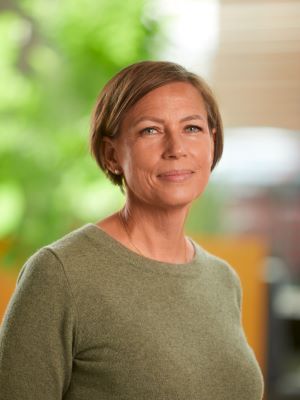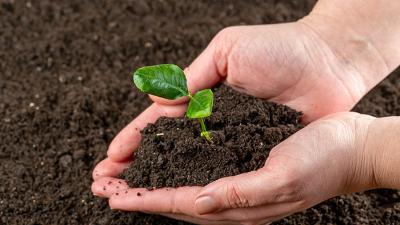The project is led by Professor Karen V. Lykke and is funded by The Research Council of Norway.

Much of Norway's agricultural land borders rivers and streams. Between the arable land and the waterways lies what is called the riparian zone. This zone is very important for the surrounding nature. Illustration photo: Jamo Images / Unsplash
Can regenerative agriculture be one of the solutions to prevent pollution and runoff from agriculture into waterways? And can it help save the Oslo Fjord in Norway? These are some of the questions the new research project RIPARAGRO will answer.
The project is a collaboration between researchers at SUM, NMBU, Norges Vel, and The University of Glasgow, as well as farmers, ecologists, and river basin managers in Norway. Together, they will investigate barriers to the restoration of cultivated land and explore solutions through regenerative agriculture, using the regions of Viken and Innlandet in Norway as examples.
Soil erosion and pollution of the Oslo Fjord
Only 3 percent of Norway's area is arable land. Much of this agricultural land borders rivers and streams. Between the arable land and the waterways lies what is called the riparian zone. The natural vegetation and life in this zone are very important for the surrounding nature.
The riparian zone acts as a filter against pollution of waterways from nutrients and pesticides used in agriculture and can prevent erosion and contribute to biodiversity. At the same time, we lose valuable arable land if the riparian zone becomes too large. Therefore, there is often a conflict of interest between maintaining the riparian zone and using it for agriculture and other purposes.

While riparian zones are under pressure, agriculture has also changed with new farming practices. This has made the soil more mineral-based. The soil no longer stays on the fields - it blows away and runs off into rivers and streams before ending up in waterbodies such as the Oslo Fjord. There is also additional stress on the soil from climate change, which leads to erosion and more extreme rainfall and floods. Valuable soil is ultimately washed away.
"This summer has shown that we need to change agriculture in a direction that makes the soil more drought-resistant and robust in the face of extreme rainfall. If we can combine protecting riparian zones along rivers and streams with building up soil health so that there is more organic material in the soil, this can have a significant effect on the runoff problem," says the leader of the research project, Professor Karen V. Lykke.
Collaboration between researchers, farmers, ecologists, and management
One solution to the problem may be regenerative agriculture - a farming practice that aims to build and repair natural cycles. This type of agriculture builds up the organic content in the soil, allowing it to retain both water and nutrients better. Additionally, more carbon is sequestered in the soil. Regenerative agriculture is a farming practice that farmers have developed through experiential knowledge.
"Researchers involved in natural restoration know what is needed to solve these problems in the ecological sense. However, we believe that involving farmers, environmental organizations, and local governments in humanities and social scientific issues is the solution. If we ask, "What should we do, for nature, for the climate, for the Oslo Fjord, and for future generations" and tie the answer we get to new agronomic knowledge, we will come a long way. We hope to find a win-win solution through regenerative agriculture, which can point to a new direction for both farmers' practices and - not least - help the situation for the polluted Oslo Fjord, says Karen.
The project's goal is to co-create new knowledge and recommendations for management together with partners and stakeholders and solve acute societal needs through basic research in ecology, agronomy, and cultural studies.
 The RIPARAGRO project is funded by the Norwegian Research Council through optimization funds for humanities-strong applications.
The RIPARAGRO project is funded by the Norwegian Research Council through optimization funds for humanities-strong applications.
Research on food and soil by SUM

RIPARAGRO is one of the activities of the research groups Food and Sustainability and SoilFood at SUM. The groups study the politics, practices, and culture of food, as well as the political, ecological, and cultural aspects of food, landscape, and land use.






